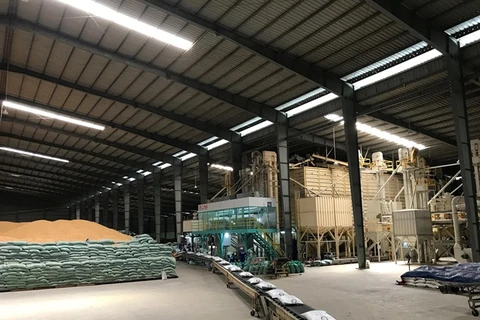Hanoi (VNA) - The prices of Vietnam’s sticky rice are facing a downward trend due to its over-supply and dependence on a single large market, according to the Department of Farm Produce Processing and Market Development under the Ministry of Agriculture and Rural Development (MARD).
Although it is now the beginning of the harvest of the summer-autumn crop, sticky rice farmers have few orders and few prospective buyers.
The statistics of Vietnam Food Association (VFA) showed that, in 2017, Vietnam exported 1.4 million tonnes of sticky rice, mainly to China.
Last year, as Vietnam was expanding sticky rice production, China also quickly increased sticky rice cultivation. The current inventory of Chinese enterprises is quite large; therefore, it is impossible to promote the export of sticky rice to China in the near future, a sticky rice exporter to China revealed.
Due to the declining demand for sticky rice, its price declined sharply from 530-540 USD per tonne in January-February to 460-470 USD at the moment. The domestic sticky rice price also fell sharply compared to other types of rice.
In contrast, the consumption of fresh rice IR50404 in the last winter-spring crop in the Mekong Delta has been quite "smooth". Domestic supply is not sufficient to meet all export contracts.
Therefore, prices of IR50404 rice in this region have continuously risen, setting the highest record in recent years. In some periods, the price of fresh rice IR50404 in the field was purchased by traders at a price of nearly 6,000 VND per kg, up 1,000 VND per kg compared with the peak price of 2017. The export price of this type of rice also rose significantly, higher than the price for rice from Thailand, India and Pakistan.
Looking at the contrast between the two types of rice, it is clear that the current crop structure in the country’s largest granary is not yet flexible enough to quickly adapt to meet market demands.
Exporters said in order to avoid the oversupply of sticky rice and the undersupply of other rice types, MARD should coordinate with the Ministry of Industry and Trade (MoIT) and the VFA to study the import market and the demand for each type of rice. Then they can provide information to farmers, enterprises and localities to make adjustments before the planting season, they suggested.-VNA
VNA

























